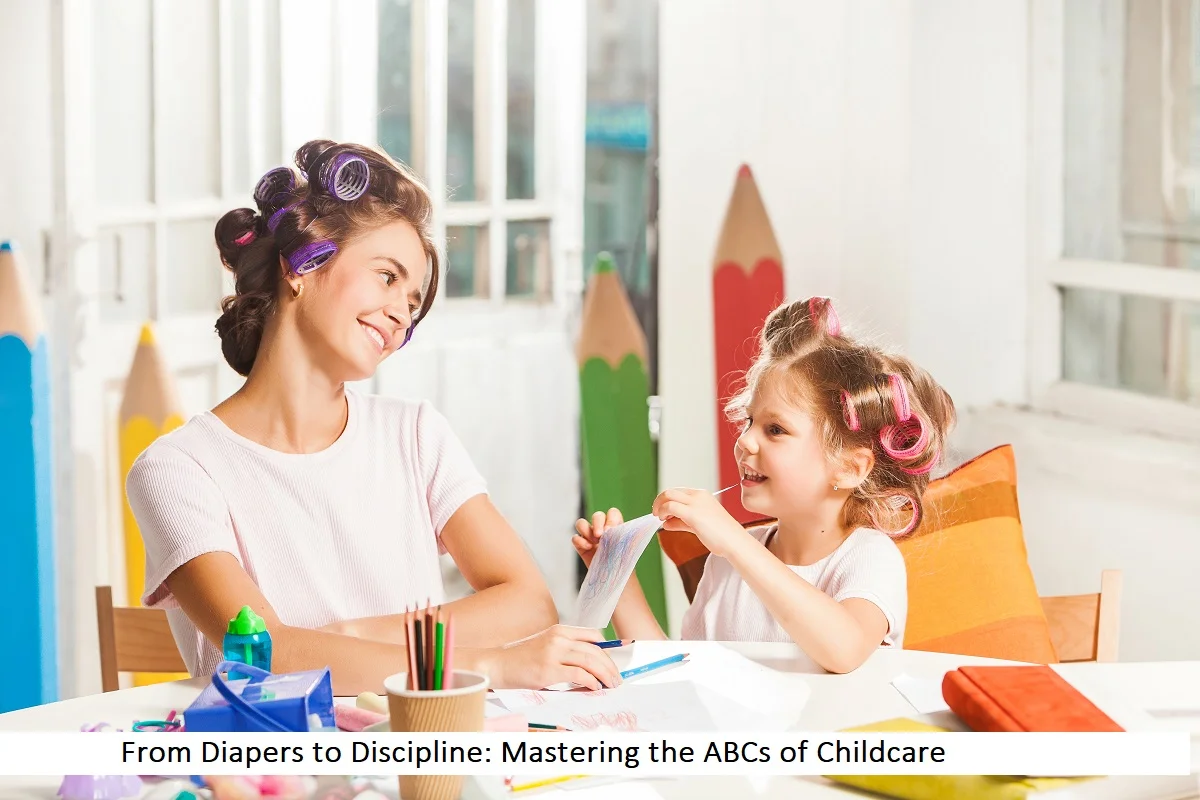10 Gentle Parenting Techniques for Positive Discipline and Better Bonds
In the recent years, gentle parenting has gained much attention as a compassionate approach that promotes respect, empathy, and positive discipline rather than relying on traditional measures. Unlike the old discipline methods that often focus on control through punishment, gentle parenting shifts the focus toward understanding a child’s emotions and nurturing their ability to make good choices independently. This approach values open communication, mutual respect, and building a strong bond between parent and child.
Let’s explore 10 effective gentle parenting techniques that nurture positive discipline and deepen the bonds within the family. These techniques provide a balanced path to raising confident, kind, and independent children, all while building the trust and closeness that lie at the heart of every parent-child relationship.
1. Active Listening
One of the basic approaches of gentle parenting is active listening—the act of giving children your full attention and acknowledging their thoughts and feelings. When children feel genuinely heard, they are more likely to feel valued, respected, and secure in expressing themselves. This openness encourages cooperation and trust, laying a foundation for positive discipline.
Practicing Active Listening
- Give Full Attention: Stop what you’re doing and maintain eye contact. Even a few seconds of undivided attention can make a difference.
- Acknowledge and Validate: Let your child know you hear them by acknowledging their emotions and the reason behind them.
- Clarify and Reflect: Paraphrase what they’ve said to show understanding and to encourage them to expand on their thoughts.
2. Setting Clear Boundaries with Respect
In gentle parenting, boundaries are essential for guiding behavior, but unlike rigid rules, they are communicated with respect and flexibility. Boundaries provide children with a sense of security, helping them understand what is expected of them without feeling restricted or controlled. When boundaries are explained with empathy, children are more likely to respect them and understand their purpose.
Tips for Communicating Boundaries
- Explain the Reasoning: Children are more likely to accept boundaries when they understand the reasons behind them. For example, “We hold hands in the parking lot to stay safe from moving cars.”
- Use Positive Language: Frame boundaries in a way that focuses on what they can do, rather than what they can’t. For example, “You can play with your toys after you finish your homework.”
- Be Consistent: Consistency helps reinforce boundaries without creating confusion. However, show flexibility when circumstances call for it, and communicate the reasons for any changes.
3. Using Positive Reinforcement
Positive reinforcement is a key component of gentle parenting, focusing on acknowledging and rewarding good behavior to encourage children to repeat it. Unlike punishment-based discipline, which centers on what children do wrong, positive reinforcement highlights what they do right. This technique builds self-esteem, enhances the parent-child bond, and motivates children to adopt positive behaviors willingly.
Role of Positive Reinforcement in Gentle Parenting
By focusing on children’s efforts and achievements, positive reinforcement supports intrinsic motivation, helping children feel proud of their actions. It encourages them to understand the impact of their behavior on others and fosters a desire to behave well for personal satisfaction rather than fear of punishment.
Examples of Non-Material Rewards
- Praise and Acknowledgment: Simple statements like “I really appreciate how you shared your toys today,” or “You did a great job putting your things away.”
- Physical Affection: A high-five, hug, or smile can go a long way in acknowledging their efforts.
- Extra Quality Time: Activities like reading a favorite book together or spending extra playtime can be a meaningful reward.
4. Modeling Desired Behavior
Children are naturally inclined to imitate adults, particularly their parents. In gentle parenting, modeling desired behavior is a powerful tool. By showing empathy, patience, kindness, and good communication, parents set a standard for their children to emulate.
Being a Positive Role Model
- Demonstrate Self-Control: When faced with stress, show calm and constructive ways to handle it. Children learn by observing how parents handle frustration or anger.
- Show Kindness and Empathy: Treat others with respect and understanding, from family members to strangers, so children see these qualities in action.
- Accountability: Own up to mistakes when they happen, and discuss ways to make amends. This teaches children that everyone makes mistakes and that accountability is part of growth.
5. Practicing Patience and Self-Regulation
Practicing patience and self-regulation is crucial in gentle parenting, as parents’ reactions often shape how children perceive and respond to challenges. By developing self-regulation, parents can model calmness and resilience, creating a home environment that encourages emotional safety and trust.
Techniques to Stay Calm and Patient in Challenging Situations
- Take a Pause: When feeling overwhelmed, take a few deep breaths before responding. Pausing can prevent reactive responses and help you approach the situation more calmly.
- Shift Focus: If emotions are running high, temporarily shift focus. This might involve focusing on a different task or taking a short break to regain composure.
- Practice Self-Compassion: Remind yourself that parenting is challenging and that it’s okay not to have all the answers. This helps in approaching situations with a calm mindset rather than frustration.
6. Empathizing with Emotions
Empathy is a cornerstone of gentle parenting. By recognizing and validating a child’s emotions, parents can help children feel seen, understood, and supported. This connection lays the groundwork for children to feel safe expressing themselves, leading to healthier emotional development.
Help Children Express Feelings Constructively
- Name the Emotion: Help children label their feelings—”It sounds like you’re feeling frustrated”—to give them the language to express themselves.
- Encourage Open Expression: Let them know that all feelings are valid and that it’s okay to express them in safe ways.
- Guide with Calm Responses: Model calmness and suggest constructive ways to channel emotions, such as through words, art, or physical activity.
7. Giving Choices to Empower Children
Providing children with limited choices is a powerful way to foster independence and self-confidence. By allowing children to make decisions within safe boundaries, parents encourage them to develop decision-making skills and a sense of autonomy.
Choices Help in Developing Decision-Making Skills
Offering choices allows children to weigh options and experience the outcomes of their decisions, helping them learn accountability and decision-making. This can be as simple as choosing between two snacks or picking out an outfit, fostering a sense of responsibility from a young age.
8. Redirection Instead of Punishment
Redirection is a gentle parenting technique that shifts a child’s attention from inappropriate behavior to a more acceptable alternative. Rather than resorting to punishment, redirection teaches children how to make better choices by guiding their focus.
How to Guide a Child Towards Appropriate Behavior
- Identify the Root of the Behavior: Understand why the child is acting out. Are they tired, frustrated, or bored?
- Offer an Alternative: Suggest a more appropriate behavior or activity that meets their needs.
- Stay Calm and Positive: Approach redirection with patience and encouragement rather than frustration or criticism.
9. Encouraging Open Communication
Open communication is essential in gentle parenting, as it fosters a relationship built on trust, honesty, and understanding. When children feel safe to express themselves, they’re more likely to share their thoughts and emotions without fear of judgment.
Creating a Safe Space for Children to Share Thoughts and Feelings
- Be Available and Present: Show interest in their stories, concerns, and thoughts.
- Listen Without Interruption: Let them express themselves fully before responding, which shows that their words are valued.
- Validate Their Feelings: Acknowledge their emotions without rushing to offer solutions, as this encourages them to reflect openly.
10. Embracing Flexibility in Parenting
In gentle parenting, flexibility is essential to adapt to the unique needs of each child and situation. Recognizing that each child and context is different, flexible parenting allows parents to balance structure with compassion and understanding.
Adapt to the Needs of the Child and Situation
- Assess the Situation: Consider factors like the child’s mood, energy level, and recent experiences before enforcing rules.
- Be Willing to Adjust: If a routine or boundary needs to be modified due to unforeseen circumstances, explain the reason to the child and work together to find a solution.
- Prioritize Connection Over Control: Understand that building a bond is often more important than rigidly enforcing rules.
Gentle parenting offers an effective approach to nurturing children’s emotional and behavioral growth. Through techniques like active listening, setting clear boundaries, and encouraging open communication, gentle parenting shifts the focus from punishment to understanding, cooperation, and positive discipline. By empathizing with children’s emotions, empowering them with choices, and modeling the behavior we wish to see, parents can build a family environment rooted in trust, respect, and mutual understanding.


